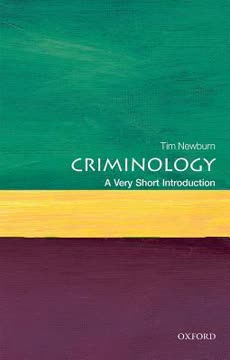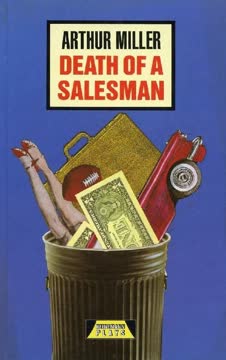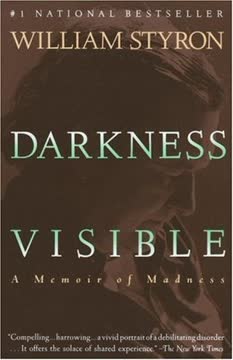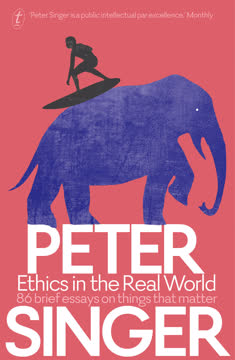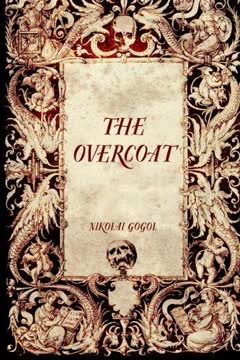Key Takeaways
1. Criminology is a Political Enterprise
That so many ‘benefit’ from crime—including people like me—is a reminder to us, if we need it, that the business of criminology is not a neutral one.
Inherent biases. Criminology is inherently political because it studies behaviors defined as criminal by those in power. The very act of defining certain actions as crimes and labeling individuals as criminals is a political process, influenced by social rules and power dynamics. This means that criminologists must be aware of their own biases and the potential for their work to be used to reinforce existing power structures.
Power dynamics. The powerful often escape the criminal label, even when their actions cause significant harm. This disparity highlights the importance of critically examining why certain behaviors are criminalized while others are not, and who benefits from these decisions. Criminology, therefore, cannot be a neutral endeavor; it must question the foundations of the legal system and its application.
Ethical considerations. The study of crime involves ethical considerations, as criminological research can influence policy decisions that impact individuals and communities. Criminologists must be mindful of the potential consequences of their work and strive to promote justice and equity. This includes advocating for fair laws, equitable enforcement, and humane treatment of offenders.
2. Crime is a Social Construct
By focusing on the ways in which the label ‘crime/criminal’ is attached to certain behaviours and, consequently, to certain people, we can illustrate clearly why crime should be seen as socially constructed.
Definitions evolve. Crime is not an objective reality but a social construct, meaning that what is considered criminal varies across time and cultures. Behaviors once deemed illegal may become permissible, and vice versa, reflecting shifting social values and power dynamics. This relativity underscores the importance of understanding the historical and cultural context of crime.
Labeling theory. The act of labeling certain behaviors as "criminal" and individuals as "criminals" has profound consequences. This process of criminalization can shape individuals' identities and opportunities, perpetuating cycles of disadvantage. Criminologists must examine how these labels are applied and their impact on individuals and communities.
Power and enforcement. The enforcement of criminal laws is not always equitable, with certain groups disproportionately targeted and punished. This differential treatment highlights the role of power in shaping the criminal justice system and the need for critical analysis of its biases. For example, stop and search rates are much higher for black people than white people.
3. Criminality Peaks in Youth, Varies by Gender and Socioeconomic Status
The age-crime curve refers to the fact that criminal activity and other antisocial behaviour is increasingly likely during adolescence, tends to peak around the late teens, and declines quite quickly thereafter, with relatively few people continuing to offend into their 30s, 40s, or beyond.
Age-crime curve. Criminal behavior tends to peak during adolescence and decline in adulthood, a pattern known as the age-crime curve. This phenomenon suggests that factors associated with youth, such as peer influence and risk-taking, contribute to criminal involvement. Understanding this curve is crucial for developing age-appropriate interventions.
Gender differences. Men are disproportionately involved in crime compared to women, a consistent finding across various crime types and cultures. This disparity may be attributed to social roles, biological factors, and differential opportunities. However, it's important to note that women's involvement in crime is often underreported and may be increasing in certain areas.
Socioeconomic factors. Individuals from lower socioeconomic backgrounds are more likely to be involved in crime, reflecting the impact of poverty, lack of opportunity, and social disadvantage. However, it's crucial to avoid simplistic explanations and recognize the complex interplay of factors that contribute to criminal behavior. For example, indigenous adults in Australia are nearly fourteen times as likely as non-indigenous people to be imprisoned.
4. White-Collar Crime Costs Exceed Street Crime
As I have said, prosecutions are rare, and much corporate harm is dismissed as being the unfortunate side effect of successful enterprise.
Hidden costs. White-collar crime, committed by individuals in positions of power and trust, often inflicts far greater financial and social harm than street crime. These offenses, such as fraud, embezzlement, and corporate misconduct, can have devastating consequences for individuals, businesses, and the economy. Yet, they receive less attention and are less frequently prosecuted than street crimes.
Demographic differences. White-collar offenders tend to be older, more educated, and from higher socioeconomic backgrounds than street criminals. This disparity highlights the role of opportunity and access to resources in shaping criminal behavior. It also underscores the need for greater scrutiny of those in positions of power.
Enforcement disparities. The criminal justice system often prioritizes the prosecution of street crimes over white-collar offenses, despite the greater harm caused by the latter. This disparity may reflect the influence of powerful interests and the difficulty of investigating and prosecuting complex financial crimes. For example, in England, prosecutions for benefit fraud are much more common than prosecutions for tax evasion by high-net-worth individuals.
5. Formal Criminal Justice Has Limited Impact
Crime rates often remain stubbornly high even when both the quantity and the harshness of punishment is increased, and individual reoffending or recidivism is generally similarly high despite the use of imprisonment and other forms of punishment.
Deterrence limitations. The threat of punishment has a limited deterrent effect on crime, particularly for serious offenses. Many crimes are committed impulsively or under the influence of drugs or alcohol, reducing the likelihood of rational calculation. Moreover, the certainty of punishment is more effective than its severity.
Recidivism rates. High recidivism rates indicate that imprisonment and other forms of punishment often fail to rehabilitate offenders. In fact, prison may be criminogenic, exposing offenders to negative influences and reducing their opportunities for reintegration into society. For example, a study of prisoners released in 2005 found that 78% of males had at least one further arrest within five years.
Alternative approaches. The limited effectiveness of formal criminal justice highlights the need for alternative approaches to crime control, such as prevention programs and restorative justice. These approaches focus on addressing the root causes of crime and promoting rehabilitation and community healing.
6. Informal Social Control is Crucial
The general predictability of life around you is a consequence, not of the presence of police officers or the threat of punishment by the courts, but, rather, is the product of the more or less predictable interactions of individuals in myriad social settings, and the internalized desire we all carry urging us to avoid the consequences that occur when such predictability is challenged.
Socialization matters. Informal social control, exerted by family, friends, schools, and communities, plays a crucial role in preventing crime. These informal mechanisms shape individuals' values, beliefs, and behaviors, promoting conformity and discouraging deviance. Strong social bonds and a sense of community can effectively deter crime.
Family influence. The family is a primary agent of socialization, instilling values and norms in children. Positive parenting practices, such as supervision, discipline, and emotional support, can reduce the risk of delinquency. Conversely, family dysfunction, such as abuse and neglect, can increase the risk of criminal involvement.
Community efficacy. Collective efficacy, the ability of a community to regulate its members according to shared norms and values, is a key factor in crime prevention. Strong communities with high levels of social cohesion and trust are better able to deter crime and promote social order.
7. Situational Crime Prevention Reduces Opportunities
Situational prevention, by contrast, is narrower in focus, is pre-emptive and seeks, through a variety of means, to reduce the opportunities for crime.
Opportunity reduction. Situational crime prevention (SCP) focuses on reducing opportunities for crime by altering the environment and making it more difficult or less rewarding to offend. This approach is based on the premise that crime is often opportunistic and that reducing opportunities can effectively deter offenders. SCP is a pragmatic approach that can be implemented relatively quickly and easily.
CRAVED framework. The CRAVED framework (Concealable, Removable, Available, Valuable, Enjoyable, Disposable) helps identify factors that make targets attractive to offenders. By reducing these factors, SCP can make targets less appealing and reduce the likelihood of crime. For example, improving car security by installing alarms and immobilizers has significantly reduced car theft.
Examples of SCP. Examples of SCP include:
- Improving street lighting
- Installing CCTV cameras
- Target hardening (e.g., installing stronger locks)
- Increasing surveillance
- Reducing anonymity
8. Repeat Victimization is Common
Around 40 per cent of all crimes reported to the International Crime Victims Survey in 2000, for example, were repeat offences against targets that had already experienced at least one offence in the previous year.
Uneven distribution. Criminal victimization is not evenly distributed, with some individuals and locations experiencing a disproportionate share of crime. Repeat victimization, the phenomenon of being victimized multiple times, is a significant problem that requires targeted interventions. Understanding the factors that contribute to repeat victimization is crucial for effective crime prevention.
Risk factors. Factors that increase the risk of repeat victimization include:
- Living in a high-crime area
- Engaging in risky behaviors
- Having a history of victimization
- Being a member of a vulnerable group
Targeted interventions. Interventions to reduce repeat victimization should focus on:
- Identifying and supporting repeat victims
- Addressing the underlying causes of victimization
- Implementing situational crime prevention measures
9. The Crime Drop is Multifactorial
A combination of factors, which include matters of political economy, social inequality, changes in our routine activities, and, more recently, greater attention given to security and crime prevention, most likely offer us the most coherent set of explanatory variables in unpicking the trends we have observed.
Complex causes. The crime drop, the significant decline in crime rates observed in many Western countries since the mid-1990s, is a complex phenomenon with no single explanation. A combination of factors, including economic changes, demographic shifts, policing strategies, and crime prevention measures, likely contributed to the decline. Understanding the interplay of these factors is crucial for sustaining the crime drop.
Economic factors. Economic factors, such as increased income and reduced unemployment, may have played a role in the crime drop. However, the relationship between economic conditions and crime is complex and not always straightforward. For example, increased consumer spending may also increase opportunities for property crime.
Social and demographic factors. Social and demographic factors, such as changes in family structure and the aging of the population, may also have contributed to the crime drop. However, the precise impact of these factors is difficult to determine.
10. The Internet Presents New Challenges
If it is true to say that there is a certain amount of crime committed using modern information communication technologies (ICTs)—the Internet most obviously—and it is also true to say that these matters are much less formally regulated than our traditional conceptions of crime, then perhaps our main measures of crime have underestimated just how much crime is taking place.
Cybercrime explosion. The rise of the Internet has created new opportunities for crime, including fraud, identity theft, and cyberbullying. These offenses are often difficult to detect and prosecute, posing a significant challenge for law enforcement. Traditional measures of crime may underestimate the true extent of cybercrime.
Evolving threats. Cybercrime is constantly evolving, with new threats emerging as technology advances. Law enforcement agencies must adapt their strategies and develop new tools to combat cybercrime effectively. This requires collaboration between law enforcement, technology companies, and cybersecurity experts.
Global cooperation. Cybercrime is often transnational, requiring international cooperation to investigate and prosecute offenders. However, differences in laws and legal systems can hinder these efforts. Greater harmonization of cybercrime laws and improved international cooperation are needed to address this growing threat.
Last updated:
FAQ
What is "Criminology: A Very Short Introduction" by Tim Newburn about?
- Comprehensive overview of criminology: The book introduces the field of criminology, exploring its origins, development, and the key questions it seeks to answer about crime and criminal behavior.
- Core topics covered: It addresses what crime is, who commits it, how crime is measured, trends in crime, and how societies respond to and prevent crime.
- Interdisciplinary approach: Newburn emphasizes criminology as a "rendezvous subject," drawing on sociology, psychology, law, history, and statistics.
- Critical and accessible: The book aims to puncture myths, raise important questions, and provide a balanced, research-based understanding of crime and its control.
Why should I read "Criminology: A Very Short Introduction" by Tim Newburn?
- Clear, concise introduction: The book is ideal for newcomers, offering a digestible yet thorough entry point into criminology.
- Debunks common misconceptions: It challenges popular assumptions about crime, criminals, and the criminal justice system.
- Up-to-date research: Newburn incorporates recent studies and trends, making the content relevant to current debates.
- Critical thinking encouraged: Readers are prompted to question definitions, measurements, and responses to crime, fostering a deeper understanding.
What are the key takeaways from "Criminology: A Very Short Introduction"?
- Crime is socially constructed: Definitions of crime vary across time, place, and culture, and are influenced by power dynamics.
- Crime measurement is complex: Official statistics and victimization surveys both have significant limitations and must be interpreted cautiously.
- Crime trends are dynamic: Crime rates have risen and fallen for various reasons, with no single explanation for these changes.
- Prevention and control are multifaceted: Both formal (criminal justice) and informal (socialization, community) mechanisms play roles in controlling crime.
How does Tim Newburn define "crime" in "Criminology: A Very Short Introduction"?
- Legalistic definition: Crime is often defined as behavior that violates criminal law and is punishable by the state.
- Moral and social dimensions: The book discusses how some acts are considered wrong in themselves (mala in se) while others are wrong because they are prohibited (mala prohibita).
- Relativity and change: What counts as crime changes over time and between societies, with examples like abortion, homosexuality, and drug use.
- Social construction: Newburn emphasizes that crime is not an objective category but is shaped by social, political, and legal processes.
Who commits crime according to "Criminology: A Very Short Introduction" by Tim Newburn?
- Widespread lawbreaking: Most people commit some form of crime in their lives, though usually minor offenses.
- Demographic patterns: Young people, especially males, are more likely to offend, with offending peaking in adolescence and declining with age.
- Social and economic factors: Offending is more common among those from disadvantaged backgrounds, but white-collar crime by the powerful is often overlooked.
- Persistent offenders: A small group of chronic offenders is responsible for a disproportionate amount of crime, often linked to early life risk factors.
How is crime measured in "Criminology: A Very Short Introduction" by Tim Newburn?
- Official statistics: Police and law enforcement data are the most common sources but are limited by underreporting, recording practices, and manipulation.
- Victimization surveys: These ask people about their experiences of crime, capturing unreported incidents but missing some crimes and populations.
- Self-report studies: Individuals are asked to disclose their own offending, providing insight into hidden crime but subject to honesty and recall issues.
- No perfect measure: All methods have strengths and weaknesses, so multiple sources and a critical approach are necessary.
What are the main trends in crime discussed in "Criminology: A Very Short Introduction"?
- Post-war crime explosion: Crime rates rose steeply in many Western countries from the 1960s to the early 1990s.
- The crime drop: Since the 1990s, many countries have seen significant declines in both property and violent crime.
- Explanations for trends: Factors include changes in routine activities, security measures, economic conditions, policing practices, and social policies.
- Cautious interpretation: Changes in measurement and reporting practices also affect apparent trends, so conclusions must be tentative.
How does "Criminology: A Very Short Introduction" explain the recent crime drop?
- Multiple contributing factors: No single cause explains the decline; it's likely due to a combination of improved security, changes in routine activities, and demographic shifts.
- Role of punishment and policing: Increased incarceration and new policing strategies may have contributed, but their impact is limited and varies by context.
- Economic and social influences: Economic growth, reduced lead exposure, and even abortion law reform have been proposed as partial explanations.
- Rise of cybercrime: The book notes that traditional crime may have declined while new forms, like cybercrime, are undercounted.
What does Tim Newburn say about crime prevention and control in "Criminology: A Very Short Introduction"?
- Formal vs. informal control: Criminal justice institutions (police, courts, prisons) are important but not the sole or even primary means of control.
- Informal social control: Families, schools, communities, and social norms play a crucial role in preventing crime.
- Situational crime prevention: Practical measures that reduce opportunities for crime (e.g., better locks, CCTV) have proven effective.
- Social crime prevention: Addressing root causes like poverty, education, and socialization is also vital for long-term reduction.
What are the main concepts and theories introduced in "Criminology: A Very Short Introduction"?
- Routine activity theory: Crime occurs when a motivated offender, suitable target, and lack of capable guardians converge.
- Control theories: Focus on the social bonds and informal controls that restrain individuals from offending.
- Labeling and social construction: The process by which behaviors and people are defined as criminal, often reflecting power relations.
- White-collar and corporate crime: The book highlights the importance of considering crimes by the powerful, not just "street crime."
What are the key criticisms and debates in criminology according to Tim Newburn?
- Focus on street crime: Criminology has traditionally neglected white-collar, corporate, and state crimes.
- Measurement challenges: All crime data are partial and potentially misleading, requiring critical interpretation.
- Political and ethical dimensions: Criminology is inherently political, with debates over its purpose, methods, and focus.
- Paradigm differences: There are tensions between practical, prevention-focused approaches and those emphasizing structural causes and social justice.
What are the best quotes from "Criminology: A Very Short Introduction" by Tim Newburn and what do they mean?
- "Criminology is a deeply political enterprise." – Highlights that the study of crime is influenced by power, politics, and societal values, not just objective facts.
- "Crime is socially constructed." – Reminds us that what counts as crime depends on social definitions, which change over time and place.
- "Most of us break the law at some point in our lives." – Challenges the notion of "criminals" as a separate class, emphasizing the universality of minor lawbreaking.
- "There is no simple explanation for either the rise or the fall in crime." – Underscores the complexity of crime trends and the need for multifaceted analysis.
- "The crimes of our times are those of capital." – Calls attention to the often-overlooked harms caused by corporations and the powerful, urging criminology to broaden its focus.
Review Summary
Criminology receives positive reviews for its comprehensive introduction to the field. Readers appreciate its clarity, organization, and up-to-date content. The book covers various aspects of criminology, including crime definition, measurement, trends, and prevention theories. Some readers found it enlightening, particularly discussions on situational crime prevention and white-collar crime. While a few were initially expecting a more practical focus on forensics, most found the book educational and thought-provoking. Overall, it's praised as a well-written, informative overview suitable for both newcomers and those with basic understanding of criminology.
Very Short Introductions Series Series

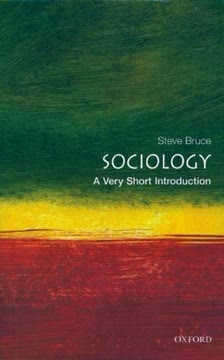









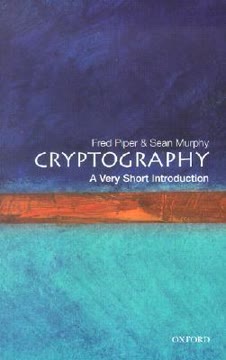
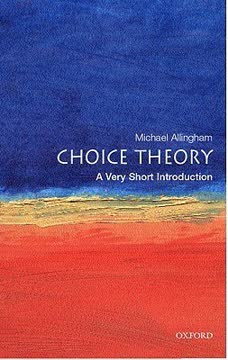
Similar Books
Download PDF
Download EPUB
.epub digital book format is ideal for reading ebooks on phones, tablets, and e-readers.
